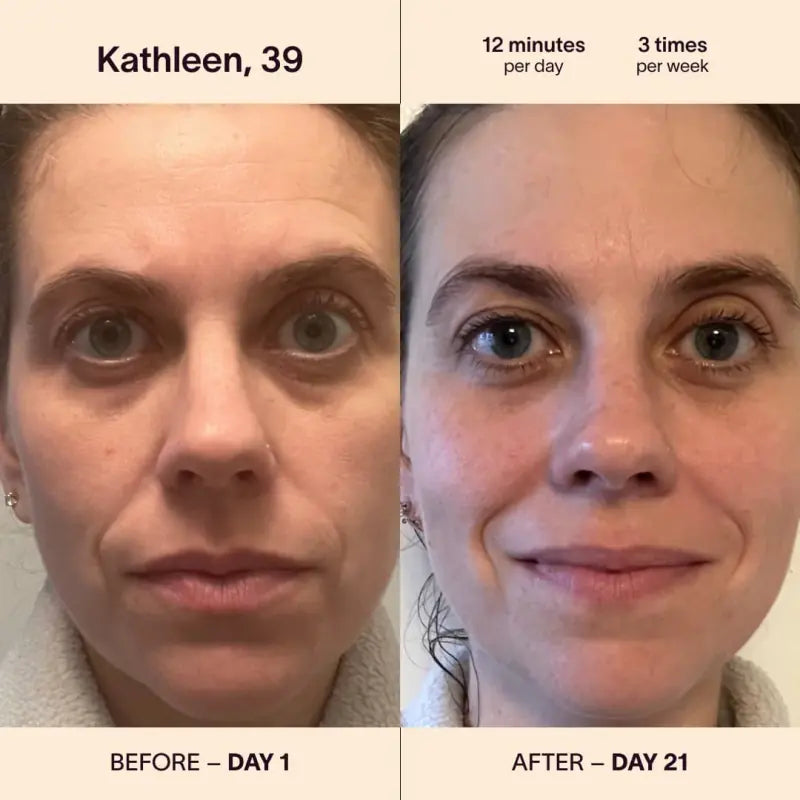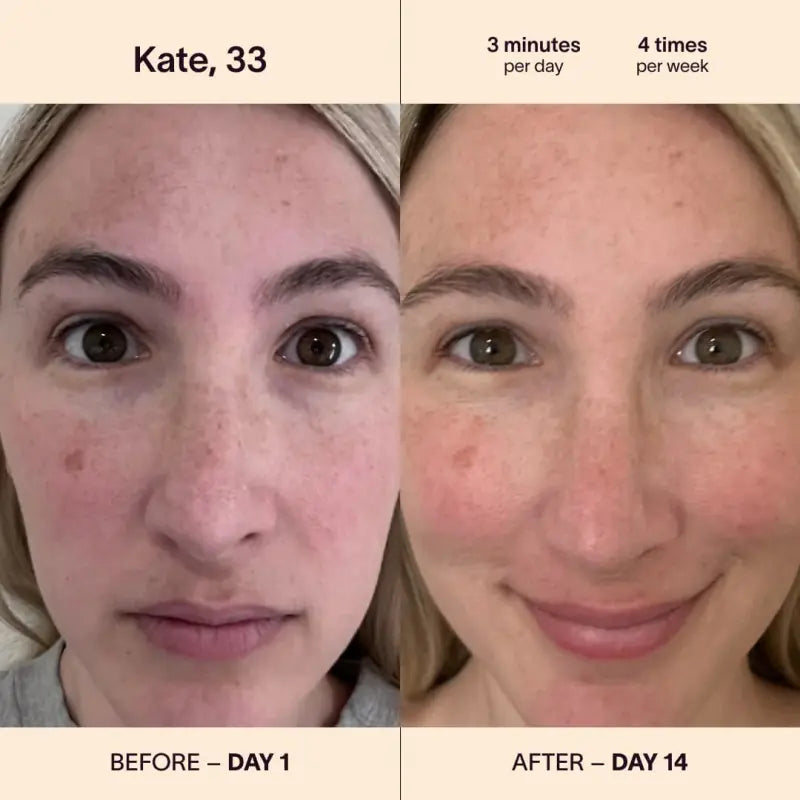Red Light Therapy (RLT) has been a subject of interest in the medical community for quite some time now. Originating from NASA’s experiments to grow plants in space, this technology has found its way into diverse health and wellness applications. Primarily, RLT serves as a non-invasive treatment to heal wounds, improve skin conditions, and alleviate pain among other uses.
The Science Behind Red Light Therapy
How Does RLT Work?
Red light therapy, also known as photobiomodulation, harnesses the therapeutic properties of red and near-infrared light wavelengths, typically ranging from 600 to 1000 nanometers. This specific range is crucial because it penetrates the skin at an optimal depth, affecting cells without causing damage that shorter wavelengths, like ultraviolet light, might inflict. When skin and other body tissues absorb these wavelengths, it triggers a series of biological processes that are beneficial for health. The light photons are absorbed by mitochondria, the power generators of cells, where they stimulate the electron transport chain, a critical component of cellular respiration.
The stimulation provided by red light therapy leads to an increase in the production of adenosine triphosphate (ATP), often referred to as the energy currency of the cell. ATP is essential for powering almost all cellular activities, including repair, regeneration, and inflammation control. Enhanced ATP production means cells can function more effectively and recover more rapidly from damage. This is particularly significant in tissues that are regularly subjected to stress or have a slow natural recovery rate, such as muscle tissues or neurons. Additionally, this increase in ATP is accompanied by the release of nitric oxide, a molecule that improves blood circulation by dilating blood vessels. This improvement in blood flow further supports the healing process by delivering more oxygen and nutrients to the affected areas while removing waste products more efficiently.
Beyond enhancing cellular metabolism and energy production, red light therapy has been associated with a range of other health benefits, including anti-inflammatory effects, improved skin health, and pain relief. Inflammation reduction is particularly notable because it addresses one of the root causes of numerous chronic conditions, including arthritis and other joint disorders. Furthermore, the therapy's ability to reduce pain and muscle fatigue makes it a popular treatment among athletes and those with chronic pain conditions. This wide array of benefits underlines the potential of red light therapy as a non-invasive treatment option across various medical and cosmetic fields, showcasing its broad applicability and effectiveness.
RLT and Scar Tissue Regeneration
You might wonder how this is relevant to
red light therapy for scars. The enhanced ATP production leads to accelerated healing processes within the skin. Among other things,
red light therapy for scar tissue aids in collagen production and promotes tissue repair. This in turn leads to faster cellular turnover, reducing inflammation and eventually minimizing the appearance of scars.
Types of Scars That Benefit From Red Light Therapy
Acne Scars
For individuals battling the long-term effects of acne, this therapy offers a beacon of hope. This treatment leverages the power of specific wavelengths of light to penetrate the skin, enhancing its natural healing abilities and promoting the regeneration of cells. When it comes to acne scars, which often dent the skin's surface and disrupt its texture, Red light therapy for acne scars stimulates collagen production—a critical component in the dermal repair process. Over time, this leads to a reduction in the depth and harshness of scarring. Users must be patient, however, as the improvements are gradual and require regular sessions.
Surgical Scars
This innovative treatment harnesses red and near-infrared light to soothe the skin and accelerate the healing mechanisms at a cellular level. For post-operative scars, which can be red, raised, and sometimes painful, red light therapy on scars offers a non-invasive solution to enhance tissue repair and increase blood circulation to the affected area. Regular treatment sessions help in softening the scar tissue, making the scars less conspicuous and more supple. As the treatment is gentle and devoid of invasive techniques, it is suitable for various skin types and post-surgery conditions, facilitating a smoother and more aesthetically pleasing healing process.
Stretch Marks
Stretch marks, those linear streaks that occur when the skin is rapidly stretched, can also be addressed through red light therapy. Known for its versatility in treating a variety of skin concerns, it aids in improving the skin’s elasticity and overall texture. This treatment method boosts collagen and elastin production, key elements in maintaining skin's stretchability and firmness. As the skin's support structure strengthens, the visibility of stretch marks tends to diminish. The therapy is backed by both scientific research and numerous user testimonials that highlight its effectiveness in lessening the prominence of stretch marks. Because it encourages natural healing processes without causing damage to the dermis, red light therapy is a preferred option for those looking to enhance their skin’s appearance in a gentle yet effective manner. Regular use can lead to significant improvement, making the skin look smoother and more uniform in color and texture.
What To Expect When Undergoing RLT
Session Duration
Red light therapy offers a practical and time-efficient treatment option for various skin concerns, combining the benefits of light exposure with convenience. Here’s a detailed breakdown of what to expect:
-
Session Length: Typically, each session lasts between 15 to 20 minutes. This brief period is efficiently utilized, as the light penetrates the skin to stimulate cellular repair and boost collagen production. The duration is similar to a short coffee break or a quick episode of your favorite podcast, making it easy to fit into even the busiest schedules. This short session time ensures that you can relax and rejuvenate without rearranging your day.
-
Frequency: The frequency of red light therapy sessions should be tailored to individual needs, particularly depending on the severity of skin issues being addressed. For mild skin concerns, fewer sessions may be sufficient, while more severe conditions like deep scars or chronic inflammation may require more frequent treatments. Experts typically recommend starting with two to three sessions per week. This regimen allows for sufficient exposure to the therapeutic light without overtaxing the skin, helping to initiate the healing process and gradually improve skin appearance.
-
Professional Advice: Dermatologists and therapy specialists often suggest an initial schedule of two to three weekly sessions to effectively measure the treatment’s impact on the skin. This recommendation is based on clinical experience and research studies that document significant improvements in skin texture, tone, and overall health with regular use of red light therapy. Based on the observed improvements and personal comfort, the frequency may be adjusted. Ongoing professional consultation ensures that the therapy remains both safe and effective, tailored to evolving skin needs.
Integrating red light therapy into your skincare routine can be a straightforward and beneficial enhancement. It requires minimal time commitment while offering a range of therapeutic benefits. Whether you're looking to rejuvenate aging skin, heal scars, or simply boost your skin's natural glow, red light therapy could be a convenient and effective solution.
Results
People are unique, and so is their skin. For some, positive changes in the skin's texture and the appearance of scars can be seen in just a few weeks. However, for others, it might be a slower journey taking a couple of months. But here's the encouraging part: both short-term improvements and lasting benefits have been observed by many who've tried it. This suggests that not only can the therapy help with immediate concerns, but using
at-home red light therapy devices can be a great way to keep up with skin maintenance over time.
Safety and Considerations
Is RLT Safe?
Safety is of utmost importance whenever we think about undergoing any form of medical or therapeutic treatment. Red light therapy, often known simply as RLT, is no exception. The good news is that the FDA, a major authority in the health sector, has given its approval for various types of red light therapy wand devices specifically for skin treatments. These treatments can address various skin concerns, including the repair of scars. It's worth noting that while many people have seen benefits from using RLT, there are some potential side effects.
However, these are typically mild. Most commonly, some individuals might experience a temporary redness on their skin after undergoing the treatment. Interestingly, similar light treatments like blue light for acne have also gained popularity in recent years.
Considerations Before Undergoing RLT
If you're thinking about trying out RLT, there are some things you should consider. First and foremost, always remember to seek advice from healthcare professionals. Whether you're planning to purchase your red light wand or you're thinking of scheduling a session at a professional clinic, it's always best to get a medical opinion. Although RLT is generally considered safe, there might be certain conditions or medications that don't go well with this treatment. Just as with the use of blue light for acne or other treatments, it's crucial to understand any possible contraindications to ensure your safety.
Advantages Over Other Scar Treatment Methods
Choosing the right scar treatment can be crucial for both cosmetic and comfort reasons. Red Light Therapy (RLT) is becoming increasingly popular due to its unique advantages over traditional methods. Below are the key benefits:
-
Reduced Pain - As discussed previously, unlike many traditional scar treatments, which can be quite painful and often involve needles or harsh procedures, it offers a gentler alternative. Using a red light face wand, this therapy minimizes the discomfort typically associated with scar treatments. Red light's soft nature eases discomfort and lessens pain throughout the healing process, which promotes regular use and improves results.
-
Lack of Chemicals - Many conventional scar treatments rely on chemicals or invasive topical ointments that can irritate the skin or cause allergic reactions. Red light therapy for the face, on the other hand, offers a treatment that is free from any chemical additives. This aspect is particularly appealing for those with sensitive skin or allergies, as it reduces the risk of adverse reactions while providing effective scar treatment through natural, light-based healing.
-
Non-Invasive Nature - Red light therapy's non-invasiveness is one of its strongest benefits, as emphasized before. Unlike surgical or abrasive treatments, RLT does not require any cutting, peeling, or physical alteration of the skin. There's no downtime or recovery period involved, which means individuals can continue with their daily routines immediately after a session. For people who want a clear-cut and pragmatic approach to scar treatment, RLT is a compelling choice due to its convenience and simplicity of usage.
This type of therapy distinguishes itself from other scar treatments through its pain reduction, lack of chemical use, and non-invasive application. Each of these factors plays a significant role in its growing popularity, making it a worthwhile consideration for those looking to heal and improve the appearance of scars effectively and comfortably.

The diverse applications of RLT, from mitigating the appearance of scars to enhancing overall skin texture and elasticity, underscore its versatility and efficacy. For those considering this therapy, the benefits extend beyond superficial improvements; it promotes deeper cellular processes that can significantly improve skin health over time. Moreover, the convenience and safety of RLT make it a viable option for everyday individuals, not just those with severe skin conditions. As the scientific community continues to explore and validate its potential, RLT remains a beacon of hope for many seeking non-invasive, pain-free skin care solutions. Whether dealing with acne scars, surgical marks, or stretch marks, incorporating RLT could be a pivotal step toward achieving healthier, more resilient skin.






































